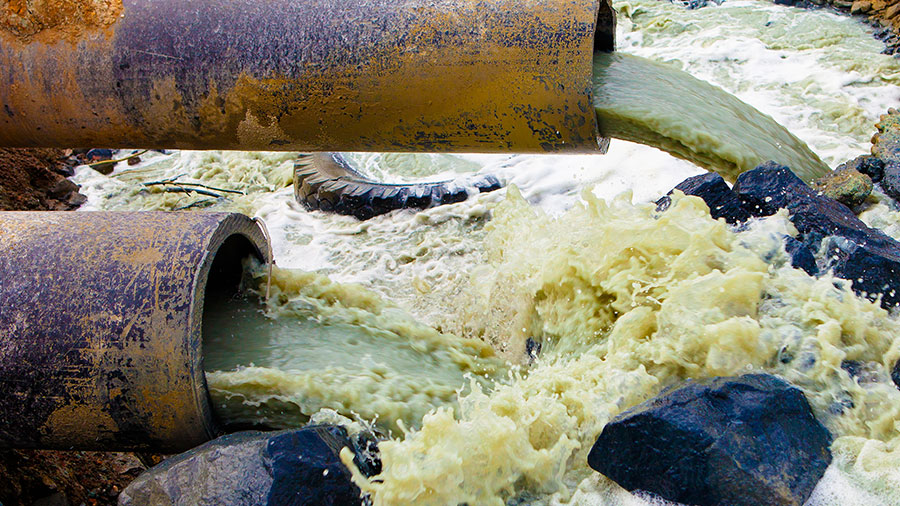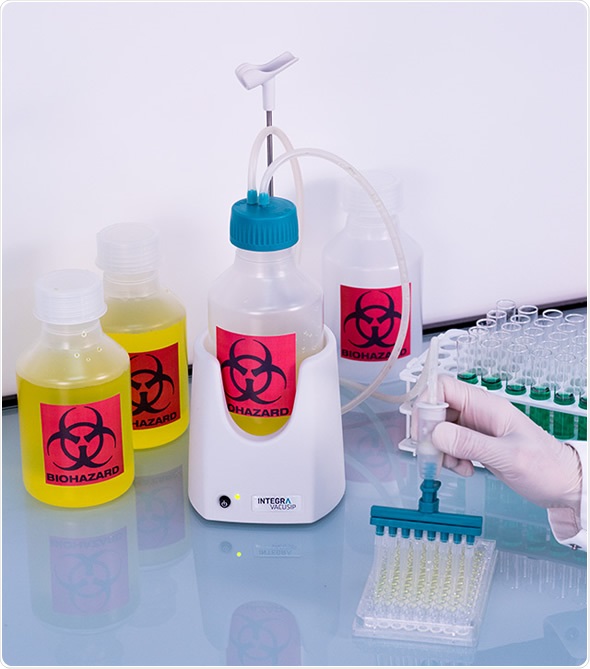Leading Industrial Wastewater Treatment Solutions: Ensuring Compliance and Efficiency
Exactly How Liquid Garbage Disposal Functions: A Thorough Overview of Strategies and Technologies Employed

Overview of Liquid Waste Kind
The intricacy of liquid waste types necessitates a detailed understanding of their attributes and ramifications for disposal. Liquid waste can generally be classified right into numerous kinds, including industrial, municipal, agricultural, and hazardous waste. Each classification exhibits unique residential or commercial properties, needing specific monitoring techniques to minimize ecological and wellness risks.
Industrial fluid waste originates from making processes and usually contains an array of contaminants, such as hefty metals, solvents, and natural compounds. Local fluid waste, mostly comprising wastewater from families and business establishments, has raw material, nutrients, and microorganisms (industrial wastewater treatment). Agricultural fluid waste, consisting of runoff from farms, may include plant foods, pesticides, and animal waste, positioning dangers to water high quality and communities
Dangerous fluid waste is characterized by its poisoning, reactivity, or potential to trigger injury. This group consists of materials like acids, bases, and certain chemicals that demand strict handling and disposal procedures. Recognizing these diverse liquid waste kinds is important for developing reliable disposal approaches and making certain conformity with ecological policies. Proper classification and characterization are vital for implementing ideal treatment methods and lessening the damaging effect on public health and the setting.
Physical Therapy Methods

Testing is the initial action, where bigger particles and debris are eliminated from the liquid waste utilizing screens or grates. This process protects downstream tools from damage and guarantees smoother procedure. Following screening, sedimentation uses gravitational force to different solids from fluids. In sedimentation storage tanks, larger fragments resolve at the base, developing a sludge layer, while the clarified fluid can be further treated.
Filtration is another vital method that involves passing the fluid through permeable materials, such as sand or membrane layers, to record smaller sized fragments. This step enhances the high quality of the fluid, making it suitable for subsequent treatment procedures.

Chemical Therapy Techniques
Chemical therapy strategies are crucial for efficiently taking care of liquid waste, specifically in resolving liquified and colloidal pollutants that physical methods may not properly eliminate. These techniques utilize numerous chemical agents to reduce the effects of, precipitate, or change dangerous materials right into less dangerous forms.
One typical technique is coagulation and flocculation, where chemicals such as alum or ferric chloride are included in advertise the aggregation of suspended bits. This process improves Web Site sedimentation, enabling for much easier elimination of the resulting sludge. Furthermore, oxidation processes, using representatives like chlorine or ozone, are employed to damage down complex organic substances and pathogens, rendering the waste safer for discharge or further therapy.
Neutralization is one more vital strategy, which adjusts the pH of acidic or alkaline waste streams to neutral degrees, stopping potential harm to downstream systems and the atmosphere. In addition, progressed oxidation processes (AOPs) make use of combinations of oxidants and ultraviolet light to deteriorate persistent toxins, accomplishing a greater level of therapy efficiency.
Organic Therapy Procedures
Organic therapy procedures play a critical function in the management of liquid waste by making use of microorganisms to disintegrate raw material and decrease pollutant degrees. These processes can be extensively categorized right into anaerobic and aerobic therapies, each using certain microbial areas to accomplish effective waste destruction.
Cardiovascular therapy includes making use of oxygen to assist in the break down of organic materials by germs. This process is generally carried out in triggered sludge systems, where aeration storage tanks provide a favorable atmosphere for microbial growth, bring about the oxidation of organic pollutants. The resultant biomass can be divided from treated effluent via sedimentation.
In contrast, anaerobic treatment happens in the lack of oxygen, relying on different microorganisms to damage down natural issue. This method is particularly helpful for high-strength waste, as it produces biogas, a renewable power source, while decreasing sludge manufacturing. Technologies such as anaerobic digesters are frequently employed in metropolitan and industrial applications.
Both cardio and anaerobic organic therapies not just reduce the environmental effect of liquid waste however additionally facilitate source recuperation, making them essential components of lasting waste monitoring techniques. Their performance, flexibility, and performance sustain their extensive implementation across numerous markets.
Emerging Technologies in Disposal
Cutting-edge techniques to fluid waste disposal are swiftly evolving, driven by advancements in technology and an increasing emphasis on sustainability. Among these emerging modern technologies, membrane layer bioreactors (MBRs) have obtained traction for their capacity to integrate biological therapy with membrane layer filtration, causing high-grade visit this site right here effluent that can be reused in different applications. MBRs enable smaller footprints and more effective operations contrasted to Discover More Here conventional systems.
An additional appealing development is using anaerobic digestion combined with nutrient recovery modern technologies, which not only treats liquid waste but additionally creates biogas and recoups useful nutrients like nitrogen and phosphorus. This double benefit boosts source performance and reduces ecological effect.
Additionally, progressed oxidation processes (AOPs) are being taken on for the deterioration of complex organic toxins. These approaches use powerful oxidants and catalysts to damage down contaminants at the molecular level, using a very effective solution for tough waste streams.
Moreover, the assimilation of artificial intelligence and maker knowing in waste administration systems is enhancing operational efficiency and predictive upkeep, causing lowered prices and enhanced environmental conformity. These innovations mirror a substantial change towards more lasting and efficient fluid garbage disposal techniques.
Verdict
Finally, reliable fluid waste disposal necessitates an extensive understanding of numerous techniques and modern technologies. The integration of physical, chemical, and organic therapy techniques guarantees the effective administration of varied waste kinds. Additionally, the emergence of ingenious innovations improves treatment efficacy and advertises sustainability in waste administration practices. By continuously advancing these techniques, it ends up being feasible to resolve the growing challenges associated with liquid waste, inevitably adding to environmental management and resource recuperation.
Fluid waste disposal is an essential element of environmental administration, calling for a thorough understanding of numerous methods and innovations customized to various waste types. Liquid waste can generally be classified into several kinds, including commercial, community, farming, and dangerous waste. Agricultural liquid waste, consisting of drainage from farms, might include plant foods, pesticides, and animal waste, posing dangers to water quality and ecosystems.
Numerous physical therapy approaches play a vital role in taking care of liquid waste effectively - industrial wastewater treatment.In conclusion, effective fluid waste disposal demands a comprehensive understanding of numerous strategies and modern technologies